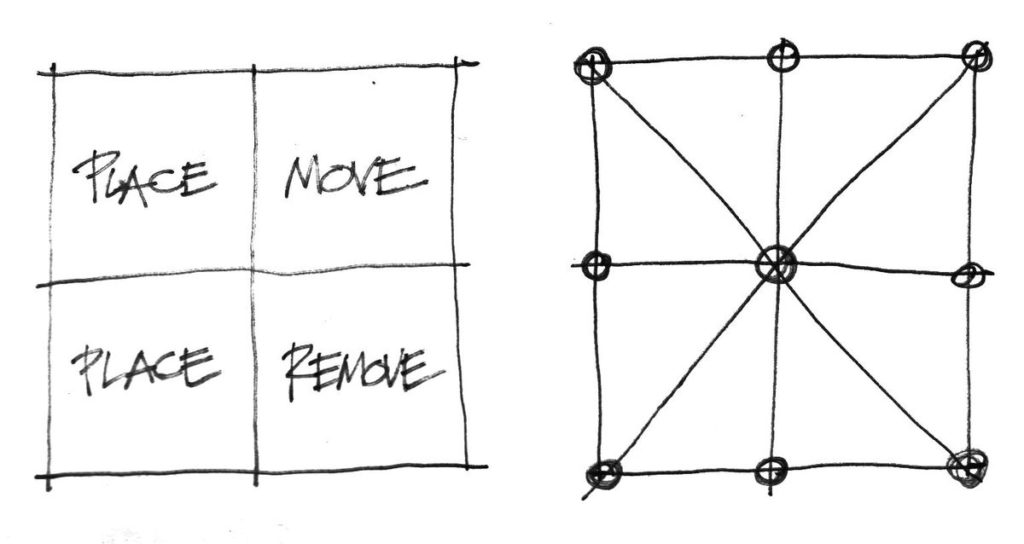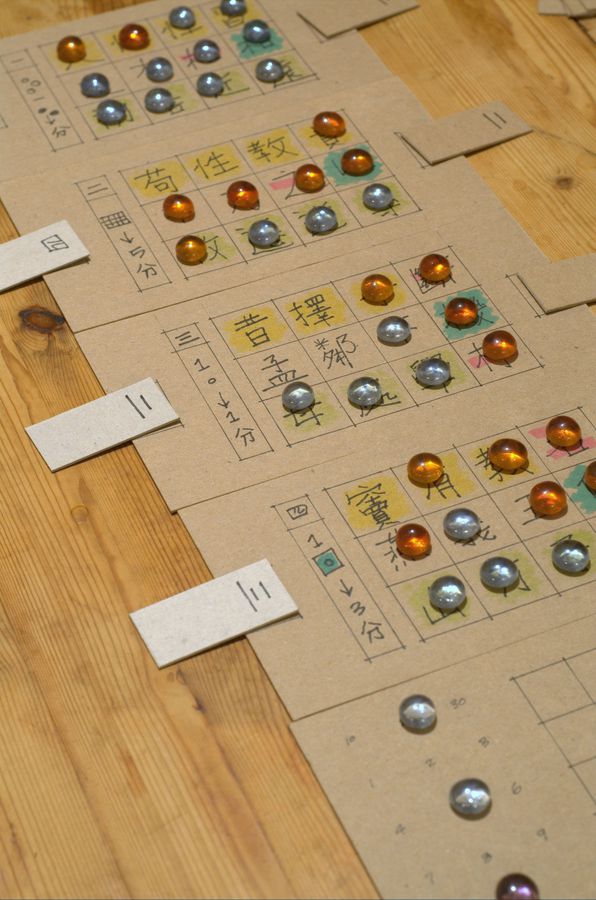Me, the Reviewer
I am a big Dixit fan. I’ve purchased six copies of this game, three that I have given away (a copy of Dixit 2 and Odyssey to my sister, and a copy of Journey to my game night host who introduced me to the game). I have not yet purchased Journey for myself, because I’m always playing the copy of at my host’s house.
I originally did a quick write up of how I think the family interacts and I thought I’d turn it into a slightly longer review. As an architect I think about this stuff way too much….
Initial thoughts that got derailed into the auxiliary stuff
For me the original Dixit is the granddaddy and I still think it has the best art (I am particularly fond of the Cat and Fishbowl). Because Marie is the artist for Dixit 2, I think the two make the best pairing. For any normal human being that is just about right. You don’t need more cards than that. Since Dixit bogs with more than 6 players, you really don’t need the extra chits that come with Odyssey either.
However, Odyssey’s score track is nice, and it is nice to be able to add a couple extra player bunny tokens if you want to have more players. However the voting placard stinks and we never use it. Instead we just use voting chits from Dixit 1, and if there are more players we use dice from other games (2+6=8).
Journey has the nice “feature” of adding more voting chits, unfortunately they used the same colors as in the original Dixit. That was an unfortunate oversight because they could have been really nice supplemental voting chits for 7+ players. Even so, we’ll still use the Journey chips if we have more than six players. And of course we completely ignore the stupid plastic pawns of Jinx.
So in summary we use the Odyssey score track and bunnies (since they sit better) with the Original Dixit and Journey voting chits. But really, who loves Dixit for the scoring?
We love it for the Art.
Journey has turned out to be an excellent expansion. If you are happy with your Dixit 1 and Dixit 2 cards and you don’t feel the need for more, then you should just stick with that pairing.
However, if you’re a Dixit hoarder like me, then you most likely purchased Odyssey. Because the penciller was a different artist, the Odyssey cards really stuck out like a sore thumb, even though Marie was the colorist. I also think the depictions in Odyssey was not open ended as the other sets, which is why I consider it to be the weakest of the bunch.
For Journey, they came in with with a completely different artist and art style. You might have a similar visual discombobulation if you slipped Journey into a 1+2 deck, but it works really well when you include it with Odyssey. The deck now has enough visual variety to eliminate the irritating uncanny valley-ness of the Odyssey cards.
As for Journey on its own. The cards are quite excellent, though quite different from Marie’s original art work since it is all digitally painted. That said, the colors are gorgeous, the art is beautiful, and the depictions are open ended like the first Dixit. Our first couple plays of Journey were as a standalone game and we were “oohing and ahhing” all the new cards. If I had to judge each deck individually I’d put it just a hair ahead of 2 but behind the original (my absolute favorite). However, if you were to get two decks, 2 pairs better with original.
Recommendations
My base recommendation would be for the original plus the Dixit 2. It is nice to have two decks worth of cards and they make an excellent pairing. Any other pairing would make for an uncomfortable visual dissonance.
If you want to add more cards, then you should get both Oddesy and Journey at the same time and really turn the deck into a variety pack.
If you want only one Dixit, then just start with the Original, it’s got great art and bunny meeples. What else do you need?
Postcripts
If you need to have the game tonight, I suggest you go to your local big box Target or Walmart. They’ll almost certainly have Journey and you can’t go wrong with that. Maybe Barnes and Noble would have the Original Dixit?
If you live with very conservative folks, I would recommend considering Journey because art is a less dark than that of original Dixit. This is quite subjective, but I remember someone watching us playing it a couple years ago and remarking how spooky it was.
My host got a copy of Dixit Jinx for Christmas. I’m excited to try out the game but I have not done so. As an architect who has been brainwashed into Modernism, I suspect that I will quite enjoy the abstract art of Jinx, but would not be surprised that people who loved the rich art of Dixit find Jinx disappointing.
Originally posted on Boardgamegeek.com

/pic724627.jpg)
/pic725046.jpg)
/pic726346.jpg)
/pic1417491.jpg)
/pic905555.jpg)
